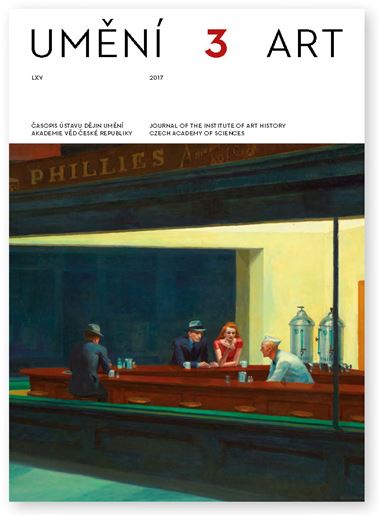Dobrosława Horzela
Opus punctile and Stained Glass around 1400
Among other painting techniques, stained glass is exceptional because the image created using pieces of glass, lead cames and glass paint ‘comes to life’ only when it is seen in transmitted light. This changeability of perception, common to stained glass and goldsmith, was perhaps the source of a unique idea to use the effects characteristic of the opus punctile technique in a stained-glass panel depicting St Mary Magdalene originally from one of the chapels of the Dominican church in Cracow (ca. 1400; National Museum in Cracow). What is of particular interest in this panel it is its background. The originally sapphire-blue glass was covered with an even layer of glass paint, i.e. washed, and then a pattern was scraped away in this layer with a very fine scratching instrument. The pattern is in the form of dynamically bending foliate stem. Within this tangled vegetation, fantastic birds appear. Relieving counts among the most popular techniques in the tradition of stained-glass production, but what makes the Cracow panel unique is the fact that the pattern was worked out exclusively using extremely thin, delicate ‘negative’ line which — depending on the lighting — creates the effect of appearance or disappearance of forms (plants and birds). A search for a solution similar to the one used in the St Mary Magdalene panel in other centres of stained-glass production, be it in Central or Western Europe, yielded no results. Although, as far as separate motifs (fantastic birds) are concerned, there may have been a few potential sources of inspiration (textiles, manuscripts), the works executed in the goldsmiths’ technique of opus punctile seem to be the most probable source of idea — both with regard to the effect on the viewer or the mode of perception and to the motifs themselves as well. The solutions characteristic of the most sophisticated court art from around 1400, arrived in Cracow, most likely, precisely through Prague. The Cracow panel is not simply an imitation of the effect of opus punctile, but its emulation, achieved using completely different means available to the vitreator, the idea of the design ‘emerging from the light’ was freely translated and executed in blue glass. Although the emulatio as an art term belongs to sixteenth-century art theory, the phenomenon of emulation itself was already present in medieval art practice.
Full-text in the Digital Library of the Czech Academy of Sciences:
https://kramerius.lib.cas.cz/uuid/uuid:c17ab3d7-4032-437b-ae2f-a7b28fa837cd
< back

